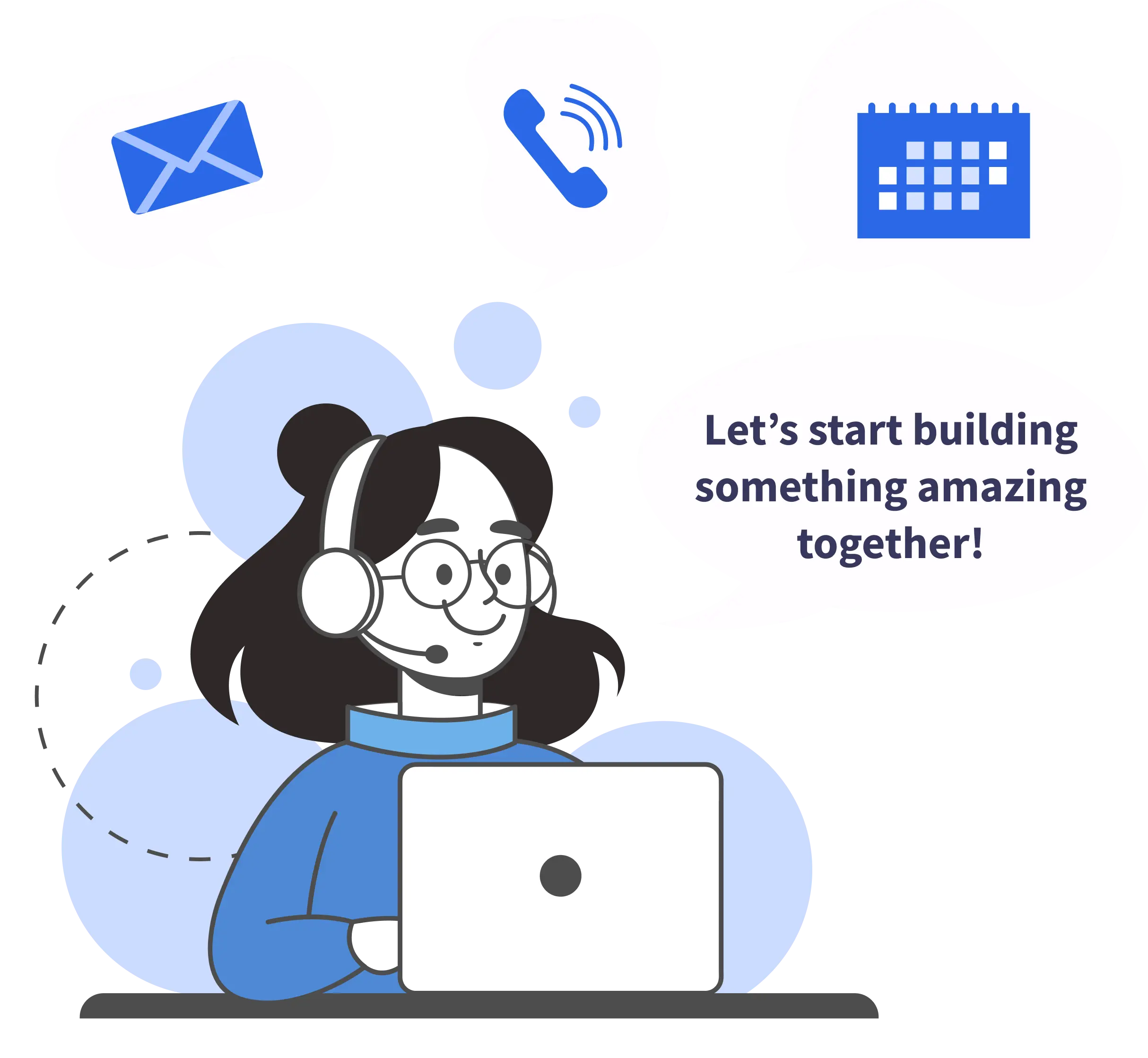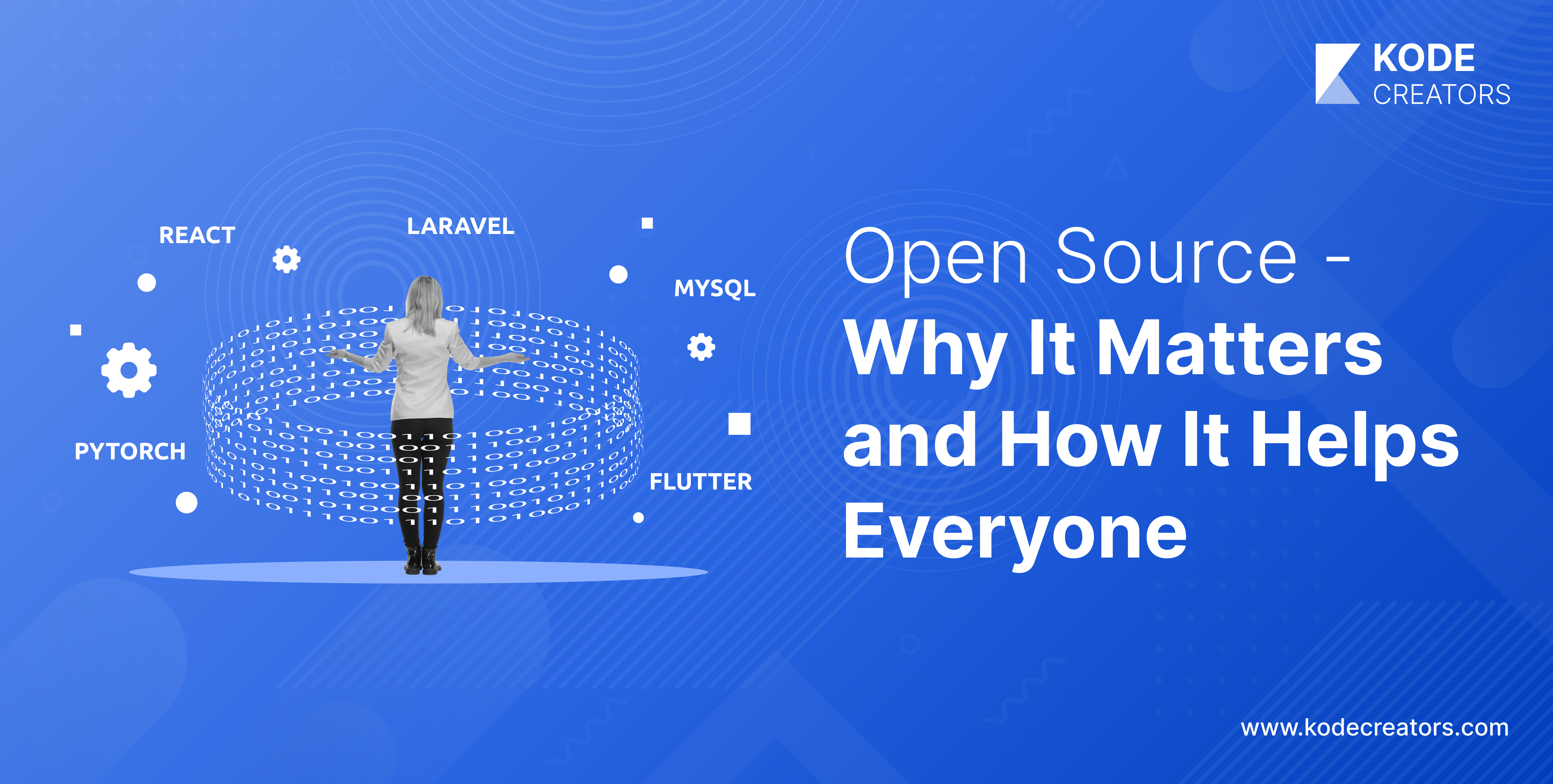In modern software development, open-source components are integral, often comprising a significant portion of a project's codebase. Studies indicate that open-source software constitutes approximately 70% to 90% of the code in contemporary applications.
Without access to these readily available components, the time required to develop new tools or software could increase substantially, potentially extending development periods by three to four times. In some cases, certain innovations might not be possible without the foundational support of open-source technologies.
Beyond helping in development, open-source projects establish standards that guide the creation of high-quality software. They offer well-documented, peer-reviewed codebases that serve as benchmarks for best practices, fostering consistency and reliability across the tech industry.
What is Open Source
Open Source projects are an essential aspect of modern software development, offering immense benefits to developers and organizations alike. These projects typically consist of well-written code that is publicly available for anyone to use, modify, and distribute. Often referred to as Packages, Libraries, or SDKs (Software Development Kits), open source solutions cater to a wide range of needs and industries.
It's Benefits
Open source software allows developers to thoroughly inspect, modify, and adapt it to suit their unique requirements. This flexibility ensures that businesses and individuals can tailor the software to their needs without relying on the original developers.
By eliminating licensing fees, open source projects reduce the financial burden on startups, small businesses, and even large corporations. This cost-effectiveness enables developers to allocate resources to other critical areas of their projects.
Open source projects serve as building blocks for new tools and applications. Instead of developing everything from scratch, developers can leverage existing open source solutions to significantly reduce development time. This efficiency accelerates innovation across industries. Some famous Open source tools and projects you might be using are Git, Visual Studio Code, Mozilla Firefox and Chromium. Frameworks like Laravel, React, Flutter all are also an Open Source projects.
Beyond Traditional Code
Open source extends far beyond traditional software. It also includes advanced technologies such as:
- Large Language Models (LLMs): Projects like Llama 2 and Bloom provide pre-trained language models that can be fine-tuned and customized for various applications. These LLMs enable developers to create AI-driven tools and systems tailored to specific use cases.
- Educational Resources: Open source projects also act as valuable learning materials. Initiatives like the Odin Project, full-stack-fastapi-template, laravel-hands-on provide in-depth knowledge and practical examples, helping developers improve their skills and understanding of specific technologies.
How to use it
Downloading and Installing
Open source projects generally gets published on GitHub or platforms like NPM, Packagist, SourceForge. These platforms provide repositories where you can download or install projects directly using specific commands, integrating them seamlessly into your development workflow.
Customization and Adaptation
These projects are not just to use as it is, but to customize and adapt to your needs. This flexibility enables the creation of tailored solutions, as seen with various Linux distributions like Ubuntu, Fedora, and Arch, each customized for particular use cases.
Some other common names you might have heard like Vercel, JetBrains, HashiCorp all have used different Open Source projects and made a tool like IDEs, static site generation, server-side rendering that helps in general development.
Is it Safe?
While using Open Source can greatly reduce your development time, it also comes with risk of having Bad or vulnerable code in your product. There are many indecent of hackers taking advantage of some vulnerability in some open source library to hack into systems which are using it.
To make sure you don't face any security issues using Open source, you should always check these things before using any Open source package or Library.
Source Authenticity
- Trusted Platforms: Obtain packages from reputable sources such as GitHub, npm, PyPI, or Packagist. These platforms have mechanisms to verify the authenticity of projects.
- Official Repositories: Ensure the package is from the official repository of the project or organization. Be cautious of similarly named forks or clones that may contain malicious code.
Maintenance Status
- Recent Activity: Review the project's commit history to confirm regular updates and active development. A stagnant project may not have patches for known vulnerabilities.
- Issue Resolution: Examine the project's issue tracker to assess how promptly and effectively the maintainers address reported problems. A backlog of unresolved issues can indicate neglect.
Community Engagement
- Contributor Base: A diverse and active group of contributors often signifies a healthy project with shared responsibility.
- User Feedback: Participate in community forums or discussion boards to gather insights into the experiences of other users regarding the package's reliability and security.
Popularity Metrics
- Download Statistics: High download counts can indicate widespread adoption and trust within the developer community.
- Star Ratings and Forks: On platforms like GitHub, a substantial number of stars and forks can reflect the project's credibility and usefulness.
License Compliance
- License Type: Review the project's license to ensure it aligns with your intended use and complies with your organization's policies. Some licenses have restrictions that could impact your project's distribution.
Security Practices
- Security Policy: Check if the project has a documented security policy outlining how vulnerabilities are reported and handled.
- Vulnerability Disclosure: see if the project discloses past vulnerabilities and the measures taken to address them.
Integration Practices
- Test Environment: Before integrating the package into your production environment, deploy it in a controlled setting to evaluate its behavior and compatibility.
Why you should make one
When you work on any Open source project, you have to dig deep into that topic and build something that's not already in market. Here are some benefits of making an Open source project
Enhance Coding Skills
Developing an open-source project requires you to write clean, efficient, and maintainable code, thereby improving your coding abilities. It also exposes you to best practices and new technologies, fostering continuous learning.
Gain Experience
Working on open-source projects provides practical experience that is invaluable, especially for those early in their careers. It allows you to apply theoretical knowledge to real-world scenarios, enhancing your problem-solving skills.
Build a Professional Network
Engaging with the open-source community enables you to connect with like-minded developers worldwide. This networking can lead to collaborations, mentorship opportunities, and exposure to diverse perspectives.
Increase Visibility and Recognition
Contributing to open-source projects can showcase your skills to potential employers or clients. It demonstrates initiative, collaboration, and a commitment to the developer community, which are highly valued traits in the tech industry.
Improve Communication and Collaboration Skills
Maintaining an open-source project involves interacting with contributors, writing documentation, and managing feedback. These activities enhance your communication, collaboration, and decision-making skills, which are crucial for professional growth.
Drive Innovation
Open-sourcing your project can lead to faster innovation, as it allows for collective problem-solving and the incorporation of diverse ideas, resulting in more robust and versatile solutions. Open source projects sometimes ends up becoming a product of its own. Many famous tool and software programs we use were started as an Open source project like Git, MySQL, WordPress and many more. So you might have some idea that can become a good tool only if you start working on it.
How to make Open source project.
While making any open source project, there are some steps you should follow. It will make the process much efficient and straight forward. This is the tried and tested way of developing Open source projects by our developers who have published multiple packages and libraries. We take 1 example of a package, laravel-gigapay and see how each step was followed.
Identify the problem
- Every successful project begins by addressing a specific need or problem. Determine the gap your project will fill, It could be as small as some simple mathematical calculation or some complex like providing the whole WEB server. So your first step would be to identify a problem that you can solve.
- in our example, we had a problem with "Gigapay"(a payment gateway provider). They didn't have any package for Laravel(php) that we can use to implement their APIs. So we decided to make one.
Look for already build solutions
- Before development, investigate whether solutions already exist. This research can save time and resources. you have to first look for some already build solutions. That either solve it or at least help in solving it.
- in our example, we did found some generic templates that we can use to implement any kind of payment gateway. But we needed some simple and straight forward package that's only focused on "Gigapay". That makes it easy to implement in future projects as well.
Chose your TechStack(Language)
- choosing a programming language can be the first step in many cases. But sometimes 1 problem can be solved with different languages. Once you have studied the market and knows which language is best to solve it and which language do most people use for it, then you will have better chance of making a solution that more people will use.
- in our example, we look for solution in other language as well, but it was not possible to use it in our project without PHP. And after developing it, we even saw that other's used it in their projects as well, making it more useful.
Connect with Others
- Collaborate with others who share the problem or have expertise in the area. Engaging with the community provides valuable insights and potential support. This gives you much more idea about what you should do or don't in your project.
- in our case, we get help directly from Gigapay's support team, where they guide us throw their APIs and solve all our queries. This really makes it easy to develop.
Testing
- Build the project with a focus on quality and reliability. Comprehensive testing is crucial to ensure functionality across various scenarios. the best way to test it is to use it in some test environment where you can try it out in different ways, and you can also include others to test it as well
- in our example, We already have lot of different use cases that we needed to handle in order for the package to work with our requirement. that provided a very good testing phase and made the package robust.
Documentation
- Clear documentation is essential for user adoption. Since you're making it for others to use (not only for yourself). Generally these documentation goes as ".Readme" file or some other kind of Markdown. some bigger project might need to develop a seperate Web documentation or even some video tutorials to make sure developers can fully take it's advantage.
- in our example, we did make a good and detailed documentation that explains how to use the package with some code examples. Making it easy for anyone else to understand and implement.
Licensing
- this is the part where you decide how you want others to use your Open source project. There are multiple Licences that you can choose from like MIT, GPL, Apache etc. be sure to understand the meaning of each Licence before using it.
- in our case, we used a MIT licence that allows anyone to use and modify our package as per their needs.
So those were the steps you should follow while making your own Open Source project. Making this kind of projects may not be easy to develop, but it surely gives a SOLID boost in your knowledge and also a sense of confidence that you are able to make a custom solution to a problem if it's not already there.
Conclusion
At the end, Open source projects are probably the best way to learn and also is a cornerstone of the technology industry. fostering innovation, collaboration, and accessibility. It enables developers worldwide to learn from existing codebases, contribute to projects, and build upon the work of others, accelerating technological advancement.
As our contribution to this, our developers have published some open source projects like Larave-Gigapay, Laravel-hands-on, Card-games-utils, Card-ease and we are planning to develop even more projects like these.
So if you are also in need of any custom-made package or have some idea that you want to explore, reach out to us at KodeCreators.












